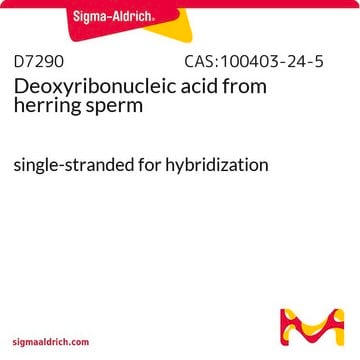529257
Poly(2-hydroxyethyl methacrylate)
average Mv 1,000,000
Synonym(s):
Poly(2-HEMA), Poly-HEMA
Sign Into View Organizational & Contract Pricing
All Photos(1)
About This Item
Linear Formula:
(C6H10O3)n
CAS Number:
MDL number:
UNSPSC Code:
12162002
PubChem Substance ID:
NACRES:
NA.23
Recommended Products
form
crystals
mol wt
average Mv 1,000,000
density
1.15 g/mL at 25 °C (lit.)
SMILES string
CC(=C)C(=O)OCCO
InChI
1S/C6H10O3/c1-5(2)6(8)9-4-3-7/h7H,1,3-4H2,2H3
InChI key
WOBHKFSMXKNTIM-UHFFFAOYSA-N
Looking for similar products? Visit Product Comparison Guide
Physical form
Water-swellable polymer. Hydrogel.
Storage Class Code
11 - Combustible Solids
WGK
WGK 3
Flash Point(F)
Not applicable
Flash Point(C)
Not applicable
Personal Protective Equipment
dust mask type N95 (US), Eyeshields, Gloves
Certificates of Analysis (COA)
Search for Certificates of Analysis (COA) by entering the products Lot/Batch Number. Lot and Batch Numbers can be found on a product’s label following the words ‘Lot’ or ‘Batch’.
Already Own This Product?
Find documentation for the products that you have recently purchased in the Document Library.
Customers Also Viewed
Damla Cetin et al.
Journal of materials science. Materials in medicine, 23(11), 2803-2812 (2012-08-09)
The effectiveness of poly(2-hydroxyethyl methacrylate)-gelatin superporous hydrogels (pHEMA-gelatin SPHs) was investigated for bone tissue engineering. The cell culture studies were performed with preosteoblastic MC3T3-E1 cells. Dynamic culture conditions were provided using 100 ml spinner flask rotating at 50 rpm. According
M Rafiqul Islam et al.
Journal of nanoscience and nanotechnology, 13(1), 603-606 (2013-05-08)
Biocompatible magnetic nanocomposites of Fe-AuNPs and poly(2-hydroxylethyl methacrylate) (PHEMA) were employed as a strategic protein immobilization platform. The hybrid magnetic nanocomposites were prepared by applying a 'grafting to' ATRP protocol. Fe-AuNPs having Fe core and Au shell were initially prepared
Narrowly dispersed hydrophilic molecularly imprinted polymer nanoparticles for efficient molecular recognition in real aqueous samples including river water, milk, and bovine serum.
Yue Ma et al.
Angewandte Chemie (International ed. in English), 52(5), 1511-1514 (2012-12-21)
Yan Fang et al.
Langmuir : the ACS journal of surfaces and colloids, 28(37), 13318-13324 (2012-08-28)
We present a detailed picture to screen general ligands from simple chemicals for fabricating affinity surface to glycosidase enzymes. The surface was constructed by grafting poly(2-hydroxyethyl methacrylate) (PHEMA) brush on SPR gold chip via surface-initiated atom-transfer radical polymerization, after which
Amit D Bhrany et al.
JAMA facial plastic surgery, 15(1), 29-33 (2013-01-19)
To evaluate the performance of a sphere-templated poly(2-hydroxyethyl methacrylate) (poly[HEMA]) tissue scaffold as a subcutaneous implant by comparing it with widely used high-density porous polyethylene (HDPPE) implant material. We implanted sphere-templated porous poly-(HEMA) and HDPPE disks into the dorsal subcutis
Our team of scientists has experience in all areas of research including Life Science, Material Science, Chemical Synthesis, Chromatography, Analytical and many others.
Contact Technical Service










